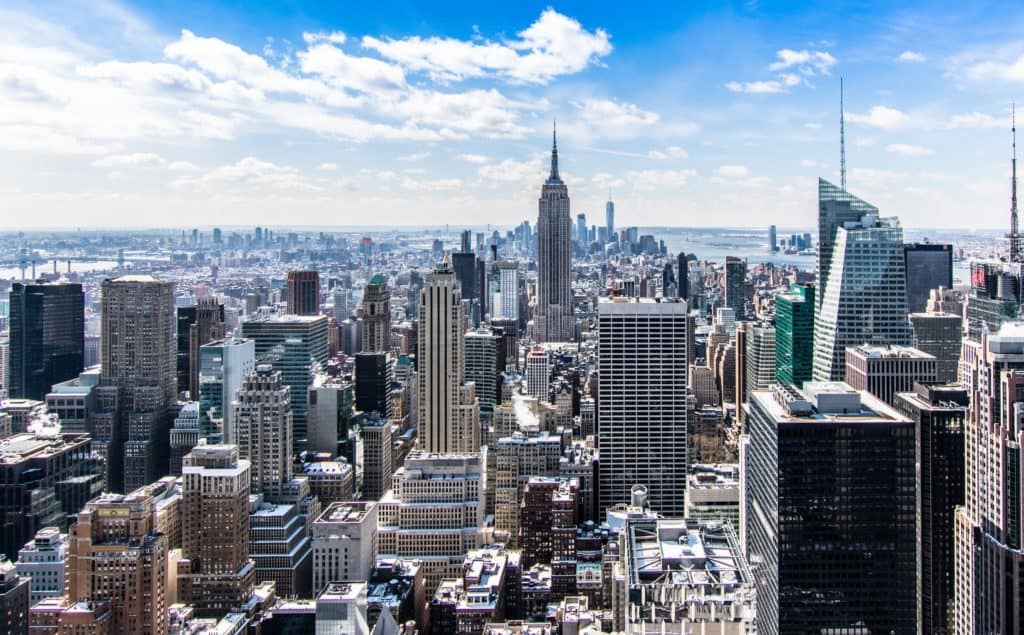In 2021, cities had enormous issues that needed to be addressed. In addition to the ongoing and ever-changing COVID epidemic, leaders had to deal with more risky driving behavior, harsh weather occurrences, hostile political climates and growing crime rates.
Although there were numerous challenges in the last year, some communities have made headway to become more sustainable and equitable by expanding cycling and electric car infrastructure expenditures, launching free public transit and bridging the digital gap. According to local authorities, new year’s priorities include such programs, cybersecurity, infrastructure, and climate adaptation.
You are more likely to come across an information kiosk rather than physical old-style info signage. However, that’s just one example of connected cities, and the following are some trends to watch out for going forward:
Smart Health
Because of the outbreak, it’s become abundantly evident that the general public has a crucial role in fostering healthier conditions for everyone. In addition to diagnosis and treatment, innovative technology may help patients take better care of themselves to lessen the load on healthcare systems. As a result, the emphasis changes from the individual to the community healthcare model.
As a result of using data analytics, it’s easy to personalize healthcare to the specific needs of people and their families. Furthermore, remote patient monitoring is made easier with software like these.
Use of AI for everything from cybersecurity to automation
The city’s infrastructure is ripe with opportunities for AI to do its thing. Even though human involvement is still required to keep the city running efficiently, artificial intelligence (AI) has the potential to provide several essential support elements for ensuring prompt service, safer infrastructure, and more people-friendly cities:
- Cybersecurity: When services are connected, there are additional options for criminals. The linked network of the town can be safer with AI monitoring than human monitoring since AI can keep track of systems, understand trends over time, and assure their safety.
- Automation: Maintaining current transportation demands while ensuring the proper upkeep of a city may be difficult. With AI’s demonstrated ability to map out maintenance plans while causing the least disruption to everyday life, we may see a rise in the use of these technologies.
- Take action, not only react: Cities may use AI to respond more quickly and effectively to unforeseen events. This system may take over predictive maintenance schedules, such as those used in public transportation, to decrease downtime. With this technology, cities may better prepare for unexpected calamities and changes in transportation by simulating what could happen.
Smart buildings to cut emissions
Most people will point to automobiles as the primary source of city pollution. On the other hand, traditional structures are responsible for around 30% of all city emissions. Cities must find a means to eliminate this to meet their environmental objectives. Soon, we may expect to witness a rise in building innovation that reduces the ecological effect and adapts to changing work and home routines. These structures may save water and resources, use machine learning to forecast trends, and create a better living environment for its residents without negatively influencing the environment in the long run.
The 5G rollout will make this a reality, but it will need more than just platitudes about 5G. Data gathering from linked IoT devices can guarantee that building operations are first automated and second maintained in the most energy-efficient methods feasible, even if work habits and mobility vary.
Smart Infrastructure
Green buildings, waste management systems, and traffic control are just a few examples of how technology may improve current interfaces in cities. According to Singapore’s Green Mark certification program, the city’s buildings will be green by 80% by 2015.
More than 4 billion IoT devices will be linked to telecommunications infrastructures, such as 5G and High-Efficiency Wi-Fi, as well as smart utilities like electricity, garbage, and water by 2028, according to Gartner. Bridge inspection systems, IoT sensors for wastewater and congestion monitoring, parking sensor applications, lighting sensors, and fire detection systems are among the most popular new technologies. As a result, future cities may become more compact and tightly connected.
In 2022, cities will have to deal with environmental, economic, and social issues. It is possible to increase the quality of life in a city by 10% to 30% if intelligent city technologies are used correctly. More importantly, new technologies may help close existing social divides by creating a more inclusive society. Cities may benefit from digitalization through improving accessibility, accelerating commercial prospects, responding to social gaps, and facilitating proactive governance.
You may also like
-
Common Misconceptions About Disability Law and Lawyers
-
Finding the Right Disability Lawyer: Key Factors to Consider
-
Creating Families Across Canada: The Journey Through Adoption
-
Understanding the Practical Applications of Ibutamoren in Research
-
Navigating Regulations and Permits in the Crude Oil Hauling Industry
